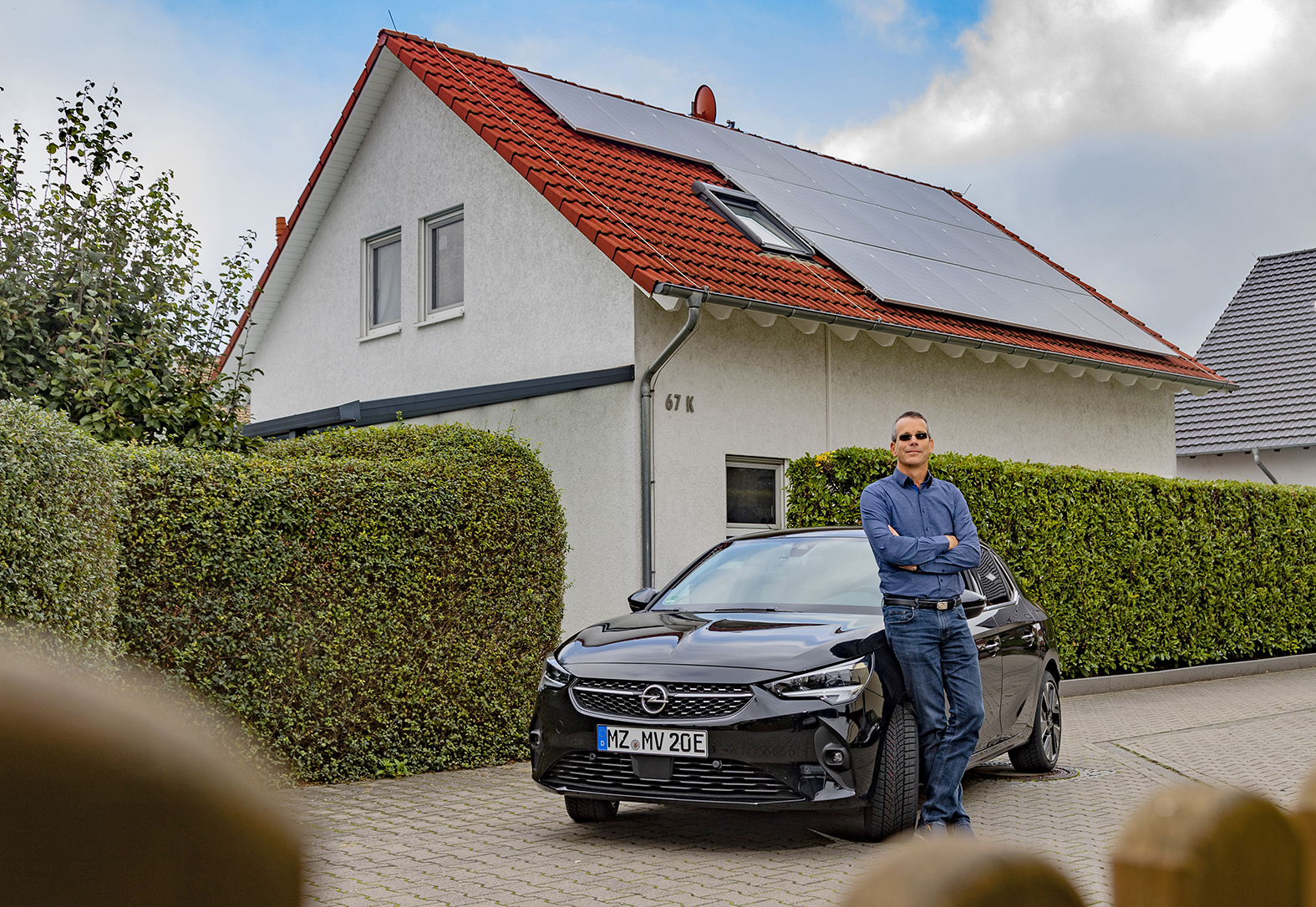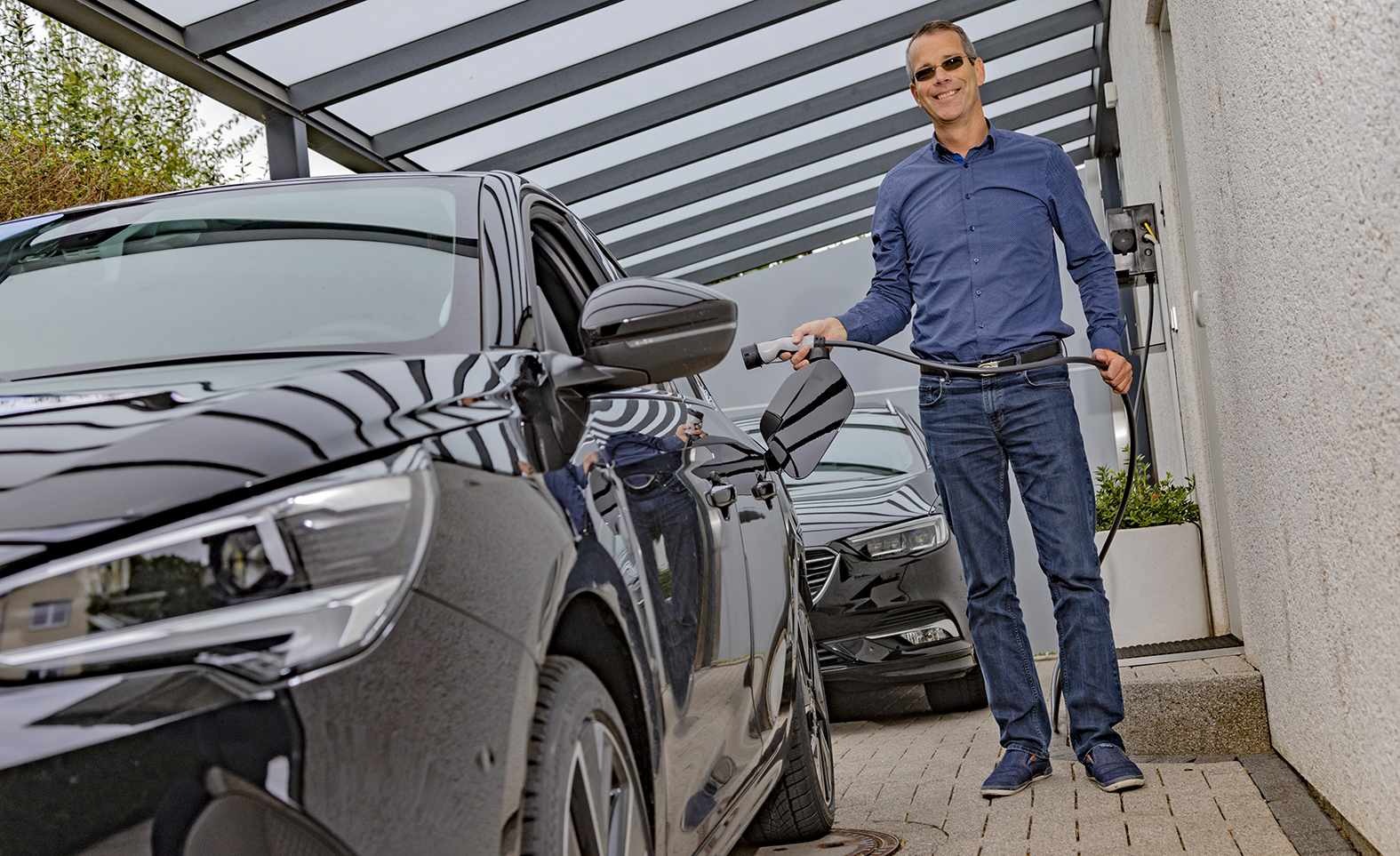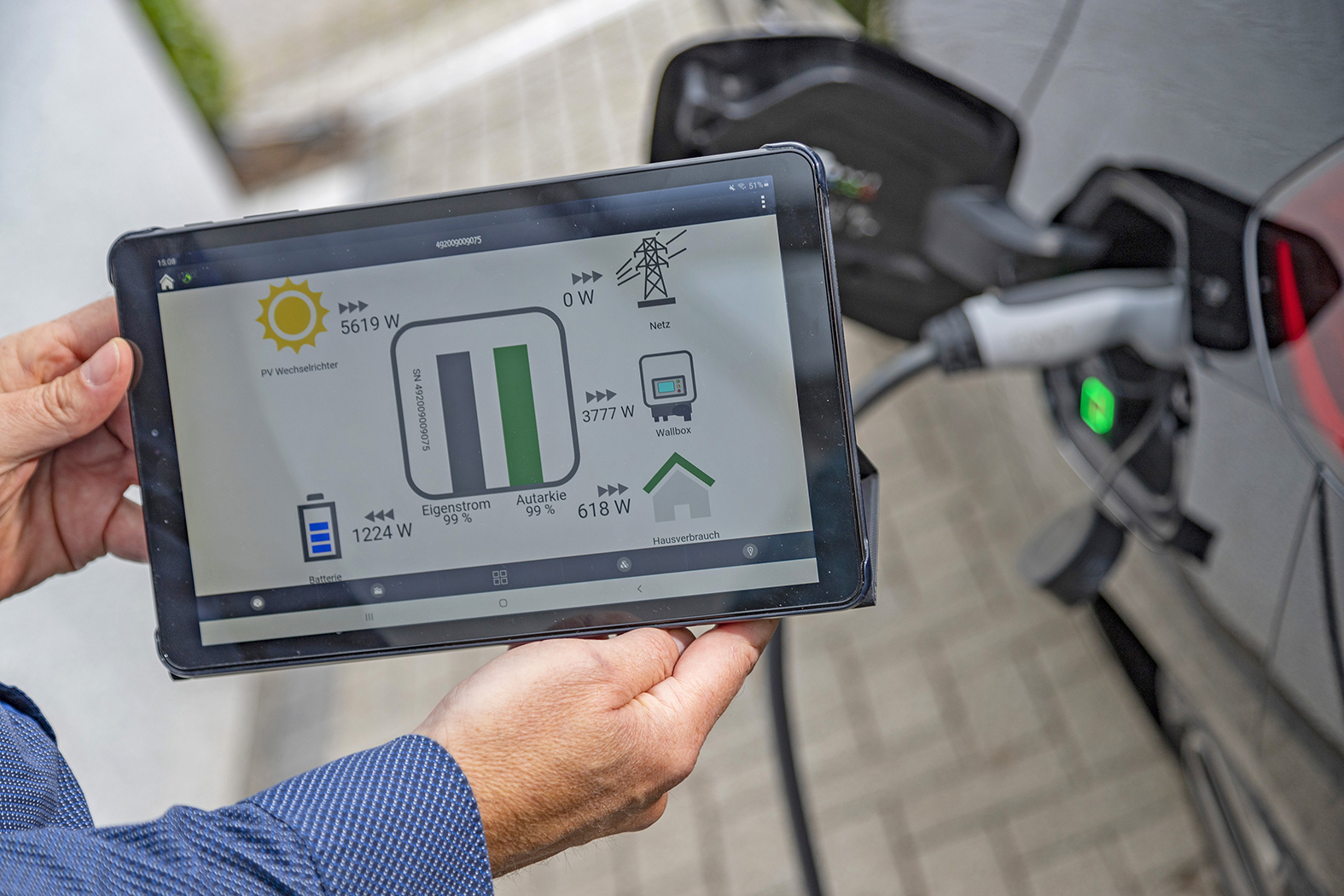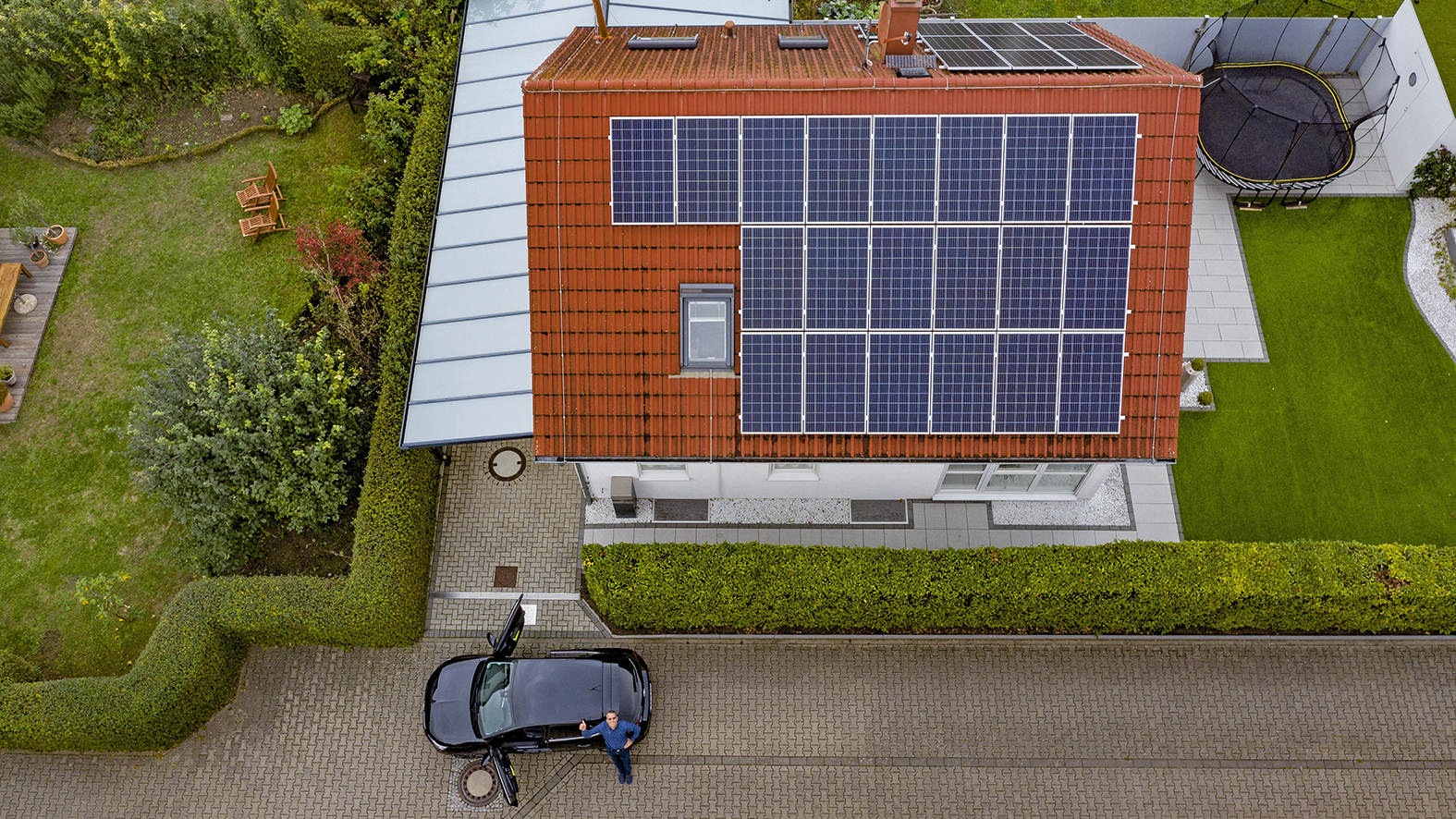A buzzing drone equipped with a camera takes off and, once it reaches an altitude of ten meters, captures what Volker Simon has been working on intensively over the past months. The engineer is not only one of the first of his colleagues to receive an Opel Corsa-e as a company vehicle on special employee terms – which is now parked in front of his home – but he also had solar panels installed on the roof of his house in Nierstein, so that he can supply his new electric car with self-generated energy. “I want to be an example for my children,” says the father of two, whose children are also enthusiastic about sustainability.
The system powers the house and car
By choosing to drive a Opel Corsa-e, Simon is not only setting an example, but is part of a trend. The latest figures show that electric cars are becoming increasingly popular. In fact, in September 2020, electric cars made up eight per cent of the market share of new vehicles. Every third private electric car customer chose the Corsa, Germany’s number one selling compact car.

“The investment was worth it – in every sense.”
Opel’s electric car has rekindled the move towards renewable energy. During his studies, Simon had already looked into how new technologies could lead to savings. He thought about installing a solar panel system when he moved into his single-family home in Nierstein 17 years ago. At the time, however, the benefits did not seem worth the expenditure. After signing the contract for a Corsa-e at a ‘Sales to employees’ special event, it was time to recalculate.

Complex research
That is how the engineer, who is responsible for airbags, steering wheels and seatbelts in the ‘Supplier Quality’ area at Opel, got started researching, which turned out to be more complex than he had first imagined. This led him to the Osnabruck-based company ‘E3DC’, which specialises in electricity storage. The solar panel system was installed prior to the Covid-19 lockdown. The road was not easy but somebody had to lead the way, explains Volker Simon. “And the investment was worth it – in every sense.”
8
years after installation, the solar system on the roof pays for itself.
The system’s central component is an intelligent wallbox that Volker Simon controls via an app that is connected to the house’s energy supply. As the homeowner, this gives him the freedom to regulate everything from if and how much solar power generated from the roof is supplied directly to the electric car or to the energy storage in the cellar to if and how much additional electricity is taken from the grid – and all via a tablet. This can also be regulated automatically..

Perceived disadvantages turned into benefits
A perceived disadvantage turned out to be a benefit: The roof of the house has no south-facing side. “I always figured that would be a problem.” In reality, however, it turned out to be more effective to install the solar panels on the east and west sides of the saddle roof: “That way, solar energy is available longer in the mornings and the evenings.” It doesn’t matter that the solar panel system cannot harness the sun’s full potential at midday because the panels are usually capped in terms of how much they can generate.


Technical details
Approximately 9,000 kWh are produced by 30 solar modules per year, of which the Simon family uses nearly 4,000 kWh.
During winter, erthe system generates less energy than required, meaning that the rate of self-sufficiency, which currently sits at 96 per cent, will decrease.
The energy storage in the house’s cellar can store up to 13 kW, which can be used to cover the night-time consumption of 5 kWh.
The Corsa-e’s energy consumption, which is 17 kWh per 100 kilometres (according to the WLTP), is also covered by the solar panel system.
The results of his personal energy revolution? “I am absolutely blown away,” explains the energy pioneer. Over the last few months, he was able to power his house and car using only self-generated energy, without using a single kilowatt from the grid. Of course, due to Covid-19, Simon is working from home, which means he uses his Corsa-e far less than he normally would. Yet, even when he includes the extra approximately 50 kilometres that he would have normally driven on his commute between Nierstein and Rüsselsheim, the investment will have paid for itself within eight years. “This usually takes solar panel systems that power just the house 20 years.”

Enormous potential
The potential for savings is, therefore, enormous – and Simon finds it a shame that so few know that. For those that lack the capital, there are funding options via the ‘Kreditanstalt für Wiederaufbau’ (KfW), for example. There are also companies that pay to install solar panel systems on other roofs and make special terms of use agreements with the homeowners: “Many people simply do not know about this.”
“Until today, I have supplied the house and Corsa-e exclusively with self-generated energy.”
That’s why Volker Simon has been spreading the word around different Internet forums for some time now in an attempt to get people excited about generating electricity from their own roofs. This has helped to confirm his own experiences: “Once you get started with it, you really get into it.”

The solar panel system is not the only intriguing thing
What about the Corsa-e? It is the Simon family’s first electric car. Getting used to how it drives and, in particular, learning to drive with (mostly) one pedal doesn’t take long at all – “and is really fascinating,” says the homeowner. It is just as important to him that the other features are also a success. “We had already grown very fond of the adaptive cruise control, heated steering wheel and the matrix light in our Opel Insignia Sports Tourer. It’s nice that we don’t need to compromise with the Corsa-e, despite it being part of a smaller vehicle class.”
